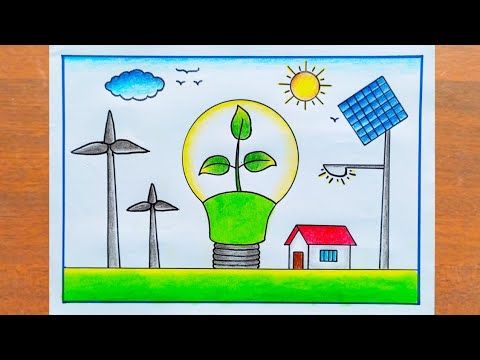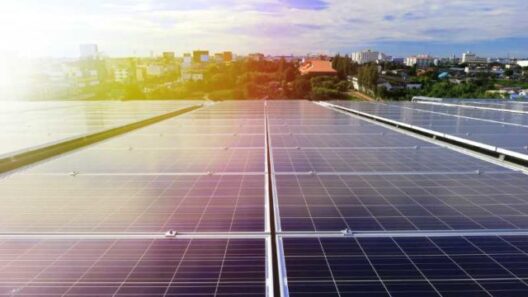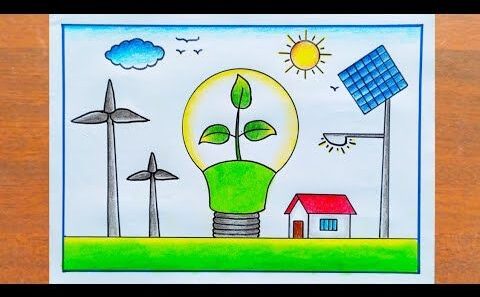The interplay between human behavior and energy conservation presents a fascinating conundrum that merits exploration. How often do we ponder our individual role in the grand tapestry of energy consumption? The challenge of fostering energy-efficient behaviors in everyday life is both crucial and profoundly complex. In an era defined by escalating environmental challenges, our understanding of the psychological triggers that influence energy conservation can lead to significant behavioral shifts.
At the heart of energy conservation lies the fundamental concept of behavioral economics—an intriguing field that examines the irrationalities that govern our daily decisions. Humans are notoriously influenced by cognitive biases, which can lead to suboptimal choices regarding energy usage. For instance, the “status quo bias” often prevents individuals from adopting new energy-saving technologies, as they tend to favor familiar habits over innovative solutions. How can we pivot our mindset to embrace change?
To commit to energy conservation, it is vital to first grasp the psychological barriers that inhibit sustainable behaviors. One prevalent obstacle is the illusion of control. Individuals frequently underestimate the impact of their actions when it comes to cumulative energy consumption. For example, turning off a light switch may seem inconsequential in isolation, but when accumulated across households, the energy savings can be monumentally significant. Encouraging collective accountability—through community-led initiatives or social comparison—can stimulate a sense of responsibility and propel individuals to adopt more sustainable practices.
Another dimension to consider is the role of social norms in shaping human behavior. Our actions are heavily influenced by the behaviors of those around us. The phenomenon known as “herd mentality” can be leveraged for good; by showcasing and celebrating energy-efficient practices, we can create a ripple effect that inspires others to follow suit. Have you ever wondered how one person’s commitment to energy conservation can spark a broader movement? This raises a thought-provoking question: What if our communities became a nurturing ground for ambitious energy-saving projects that collectively reduce our carbon footprint?
The integration of technology into our lives also plays a significant role in energy conservation. Smart home devices and energy-tracking applications serve to provide real-time data that can influence decision-making processes. These innovations help individuals develop a more nuanced understanding of their energy consumption patterns. By making energy usage visible, we shift from a realm of abstraction to tangible reality. Imagine setting achievable energy conservation goals based on real metrics instead of nebulous estimates—how might that transform your approach to energy consumption?
Advanced techniques such as gamification add an engaging layer to the pursuit of energy conservation. By turning energy-saving efforts into a game, we can harness motivation and competition as catalysts for behavioral change. Reward systems, leaderboards, and challenges can foster a sense of camaraderie among participants, making energy efficiency an enjoyable communal endeavor. In this light, the playful question arises: Are you ready to accept the challenge of becoming an energy conservation champion in your social circles?
Incorporating educational programs that cultivate a deeper awareness of energy conservation can also pave the way for meaningful behavioral changes. Educational initiatives in schools, workplaces, and community centers can create a culture of sustainability, empowering individuals with knowledge and strategies to reduce their own energy consumption. The more informed individuals are about the repercussions of their habits, the more likely they are to make conscientious decisions. How can we facilitate such educational journeys to inspire transformative change in our communities?
Furthermore, emotional engagement cannot be overlooked when discussing energy conservation. An emotionally charged connection to the issue can ignite a passionate commitment to change. Narratives that evoke empathy, such as portraying the tangible consequences of climate change—droughts, hurricanes, and extinctions—can compel individuals to reconsider their energy consumption patterns. By humanizing the statistics, we build a narrative that resonates on a personal level, fostering a sense of urgency to contribute to the solution. What stories could you share to influence others toward conservation?
Examining the intersectionality of human behavior and energy conservation sheds light on the multifaceted challenges we face. Each individual action, no matter how minor it may seem, contributes to the larger narrative of energy conservation and climate action. Environmental activism is not solely the purview of policy-makers or industry leaders; it thrives within the everyday decisions of each person. The potential lies within our collective consciousness to carve out a future where energy conservation is not merely an individual pursuit but a communal pillar of modern life.
As we contemplate the myriad ways to catalyze positive change, we must embrace the challenge of shaping our behaviors toward energy conservation—an undertaking that requires both introspection and action. It is vital to create systems of support that bolster individuals in their journey toward sustainable living. Ultimately, the future of energy conservation rests in our hands—can we rise to the occasion and redefine our relationship with energy for the betterment of our planet?







